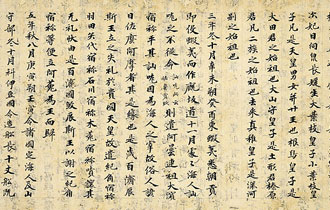Pages
|
Post-war Language Policy
Since all languages have an organic quality to them, modern Japanese has not remained unchanged since the time of the reform movement outlined above. In particular, during the Allied Occupation of Japan (1945-1952), linguists and policymakers considered a number of options that would have continued the process of language reform. Indeed, some language-reform advocates resurrected radical reform initiatives which had first appeared in the Meiji period. These included such ideas as the total abandonment of kanji, the adoption of the Roman alphabet, and the even the substitution of a Western language for Japanese. Again, these radical reforms were rejected. However, education officials and linguists did take several steps that have continued to make Japanese more accessible to the average Japanese with rudimentary education. In particular, limiting the number of kanji and simplifying them has been an important innovation. For example, students in Japan today are no longer required to learn 4,000-5,000 characters as was the case in the prewar era. Instead, the Japanese government has approved a list of 1,945 kanji for "general use" called the jōyō kanji. All students who graduate from Japanese public high schools know at least these characters. Other steps have been taken as well, including the continued standardization of foreign proper nouns and orthography.
Linguists, educators and Japanese government officials continue to monitor trends within the language and occasionally initiate or codify some changes. Nonetheless, modern Japanese--the language advocated by Futabatei Shimei and championed by linguists such as Ueda Kazutoshi in the Meiji era--continues to act as a unifying force for the nation of Japan. Indeed, it is one of the markers identifying the culture and society of Japan.
Paul H. Clark
Pages
|











